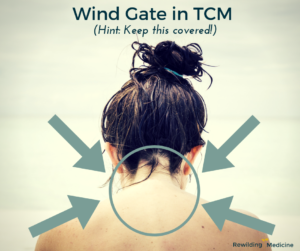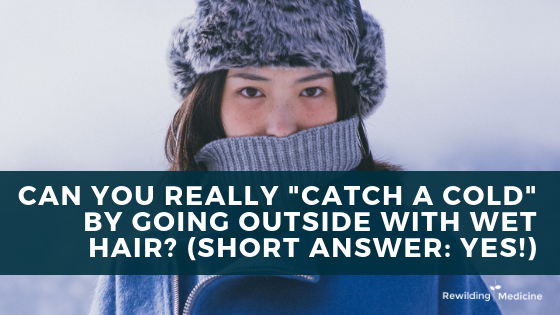How many times did your mother tell you that you’d catch a cold if you went outside without warm clothes on? Well, she was right.
In the wisdom of Traditional Chinese Medicine lays a secret to staying well during the colder months. It all boils down to keeping your exterior protected.
We speak of disease in nature-based language. An acupuncturist will consider causes of disease to be things like wind, cold, damp, and heat. As strange as this may sound to the western mind these climactic forces really do affect our physiology. In fact, in the more modern discipline of biometeorology, which studies the impact of weather and seasonality on human health, they’ve found that nearly 25% of our gene expression will change with a shift in season.
In Traditional Chinese Medicine, when you catch the common cold it is often either a case of wind-cold or wind-heat invading the body. Essentially, something is moving from outside your body to inside (think pathogen here). If the nature of the “invasion” is a wind-cold, you’ll have more cold signs like chills, body aches (since cold contracts tissue), runny nose with clear discharge, and a lack of sweating. Meanwhile, during a wind-heat “attack” you may experience a moderate fever, warm or flushed face, sore throat, and a yellow tongue coat.
Wind As An Agent of Illness
Wind is the cause of a hundred diseases in TCM. If you think about the qualities of wind in the natural world this makes sense. It’s erratic, unpredictable, changes quickly, and moves from place to place. These attributes inside the human body make wind (as a pathological factor) able to bust through the protective layers of our skin. Wind will move through the skin’s pores, enter the body, and begin to reek havoc – unless we protect ourselves accordingly.
Is It Hot or Is It Cold?
The funny thing about wind is that it doesn’t act alone. Wind is known to carry with it other pathological agents, namely heat and cold (although it can carry damp too).
If heat enters the body it begins to scorch body fluids and is responsible for sensations of heat (i.e. fever & inflamed tissues) when you get sick. If cold piggy-back’s in with wind it begins to contract bodily tissue (causing muscle aches, headaches, and stiff necks) and gunk’s up fluid secretions (making for snotty noses).
Cover That Wind-Gate
One of the simplest and most effective ways to stay well in the colder months is to wear a scarf or fluff up your collar to keep the back of your neck and upper back covered.
This region of the body we call the “wind-gate” in Traditional Chinese Medicine. It’s a particularly vulnerable area where wind is known to enter. If you’ve ever felt a chill or shiver running up your neck that’s often a sign of wind trying to get in.
On the contrary, one of the worst things to do is to go outside with cold and wet hair (especially if it’s draping over your neck). This simple little act invites in both wind and cold. It serves to weaken our defenses and opens the door for wind to glide on in.
Check out the graphic below to see where the wind gate is.

All in all, change your behavior, and you’ll change you’re life. Let go of current fashion trends and embrace some age old wisdom that will keep you healthy and happy this cold and flu season. And cover that wind gate!
Want to learn more? Check out Sean’s FREE 3-part video series on the best body practices of Traditional Chinese Medicine.
Sign up for Sean’s FREE 3-part video training series to learn the basic body wisdom of Traditional Chinese Medicine.



I’m grabbing my scarf as the fog sets in thickly among the trees today. Thank you! Great article!
Yes(!), do it! Love that & thanks for reading!